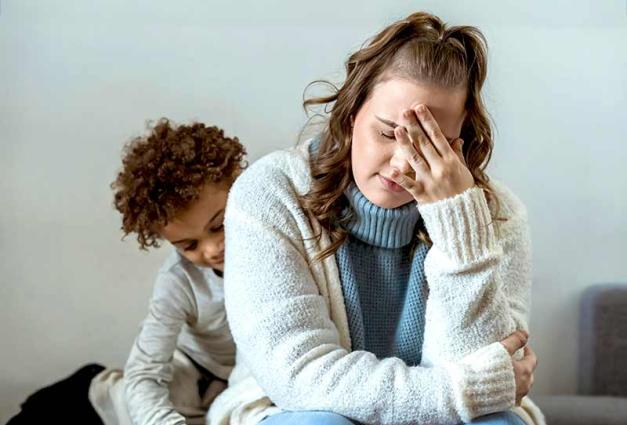With the Black Lives Matter (BLM) movement experiencing an unprecedented surge of support (and opposition) following the May 2020 killing of George Floyd, it is important to understand what might lead people—especially those outside the Black community—to participate in BLM. Just as previous research shows that interracial contact can improve racial opinions and encourage activism in support of other races, we find that contact with Black people can lead Whites to become involved in the BLM movement.
Being Inspired
On the most basic level, people are inspired to participate in a movement when they are directly impacted by the issues the movement addresses. For instance, women may join marches to fight oppressive laws or social norms that harm women. Immigrants might hold signs and rally in Washington, D.C. when policies threaten their ability to stay in the country. Queer folks may join local and national organizations dedicated to fighting for LGBTQ+ rights in the face of injustice.
But what about those who are not members of a population directly affected by a given movement? They, too, sometimes get involved—and research suggests that their participation can be important to the overall success of the movement. But why would they participate if they are not directly impacted? Undoubtedly, one reason is that they support the ideas of the movement, even if they themselves are not personally affected. But another reason is that they have ties with those who are directly impacted.
A longstanding idea in the social sciences known as the “contact hypothesis” argues that interracial contact can improve people’s opinions of other races. Research bears this out. But interracial contact does more than just shape people’s views of other races—it also affects their actions. In our study, we found that interracial contact—particularly contact with Blacks—increases participation in BLM among whites.
Taking Action
Building on an earlier study which showed that White people’s positive contact with Black people predicts support for the BLM movement, we wanted to understand the motivation to participate in BLM activism (for instance, attending a protest, joining BLM organizations, or writing letters to state representatives). We administered surveys to 214 college students and 108 adults from the general U.S. population to find out exactly how interracial contact—particularly contact between White folks and Blacks—can influence Whites’ participation in BLM activism.
Our survey measured social ties in the number of close personal relationships a White person has with a Black person (friends, colleagues, mentors, professors, family members, etc.). It also asked about participation in BLM. Our findings showed that the more contact a White person had with Blacks, the more likely they were to participate in BLM activism. Our findings were the same for both students and people from the general population.
Other factors associated with BLM participation included simply supporting the message and aims of the BLM movement (as suggested above). Age also mattered. Younger college students were the most likely to engage in BLM activism. But these factors were less important than contact.
The Importance of Interaction for Action
Research on interracial contact demonstrates that our connections with others can reduce prejudice and improve our opinions of other races. Everyday interactions with people of different racial groups builds understanding and humanizes the experience of those who look different or have experienced different levels of struggles. Those same interactions can also lead a person to engage in activism in support of other groups.
This is particularly important considering the BLM movement and the ongoing struggle for racial justice in the U.S. The history of Blacks in U.S. society is marked by a continual fight for equality, beginning with the push toward emancipation in the 1800s, continuing in the Civil Rights movement in the mid-1900s, and manifesting today in the BLM movement. Although Black people are at the heart of these efforts, the support and participation of others (for instance, Whites) can be critically important.
Our research shows that one of the key factors predicting support for, and participation in, the BLM movement among Whites is contact that is collaborative, friendly, and forms a mutually beneficial relationship. Consequently, as we continue to research racial relations between Whites and Blacks in the U.S., we can see how powerful social relationships are for influencing behavior—powerful to the point of inspiring action toward a more progressive future.
For Further Reading
Hong, P. M., & Peoples, C. D. (2020). The ties that mobilize us: Networks, intergroup contact, and participation in the Black Lives Matter movement. Analysis of Social Issues and Public Policy. DOI: https://doi.org/10.1111/asap.12230
Pettigrew, T. F., & Tropp, L. R. (2006). A meta-analytic test of intergroup contact theory. Journal of Personality and Social Psychology, 90(5), 751–783. doi: 10.1037/0022-3514.90.5.751
Selvanathan, H. P., Techakesari, P., Tropp, L. R., & Barlow, F. K. (2018). Whites for racial justice: How contact with Black Americans predicts support for collective action among White Americans. Group Processes & Intergroup Relations, 21(6), 893–912. https://doi.org/10.1177/1368430217690908
Pamela M. Hong is a Ph.D. student at Indiana University-Bloomington. She studies race/ethnicity, immigration, and movements/protests.
Clayton D. Peoples is an Associate Professor of Sociology at the University of Nevada, Reno. He studies politics, inequality, social networks, and social movements.



